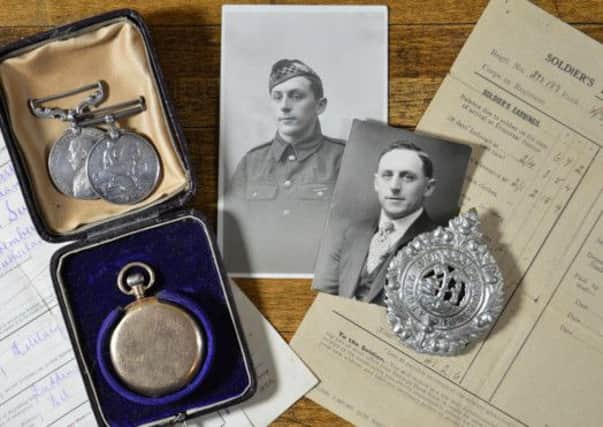How Kilsyth thanked a soldier


Lance Corporal William Rigg was a coal miner who enlisted in the Argyll and Sutherland Highlanders, experiencing and surviving the horrors of trench warfare before emigrating.
He was to make a poignant trip back to his home town for a visit in 1966, with his wife Helen, and died in 1977.
Advertisement
Hide AdAdvertisement
Hide AdTom Emme, who lives in Sacramento, had actually met the local man, many years ago, as he was his wife Robyn’s grandfather.
But it was only when she was sorting through family heirlooms during a spring clean that the watch came to light.
It is superficially plain to look at, with no distinguishing marks, and it was only when Tom pressed a catch to open the back that he saw the concealed message inside.
It is dated February 2, 1919 (about four months after the cessation of hostilities), and is a poignant record of what William (“Wullie”) Rigg’s compatriots thought of his wartime record – which had led to him being awarded the Military Medal.
Advertisement
Hide AdAdvertisement
Hide AdHe knew that Wullie had been born in Kilsyth in 1896, and that although he initially returned to the mines after the war he emigrated, first to Canada and then New Mexico, before finally settling in Ventura, California.
Tom said the secret of the watch had been discovered just in time, and almost by accident, as Robyn had been clearing family possessions left by her mother (Wullie Rigg’s daughter).
Items of no apparent special value were being cleared out, and it was only Tom’s curiosity that brought the whole story back to life.
Tom said: “I turned the watch over and took a look at the back.
Advertisement
Hide AdAdvertisement
Hide Ad“It was also blank but I noticed a slight finger edge on the side.
“I have looked at old watches before and it’s not unusual for both sides to open – many times the back has small mechanical controls for making fine adjustments to the watch.”
He added: “When I opened the back I was surprised to find it highly polished and elaborately engraved. I started to read it and immediately got a chill.”
He immediately realised the watch belonged to his wife’s grand-dad, and recalled the time he had actually met him and shook his hand.
Advertisement
Hide AdAdvertisement
Hide AdThey had chatted about the First World War, and Mr Rigg had talked about the horrors of chlorine gas.
He’d also said that coal mining is the hardest job there is.
He said: “I had carefully preserved all the relics of his military history that I found, just a handful of things – his medals, his picture, his badge from his uniform and some papers.
I had no idea that this “Thank you” for his service was sitting in a box in the closet. In some ways it was so much more personal than the other items, a gold watch from his home town, celebrating his bravery in battle that earned him a Military Medal and welcoming him home after over four years of service as a soldier in the Great War.”
Advertisement
Hide AdAdvertisement
Hide AdHe added: “It made me think of the controversial treatment of veterans returning from Vietnam or the young men and women struggling to get proper healthcare after returning from Afghanistan.
“You could pretend that 1918 was a simpler time, but regarding the war’s effect on people, I don’t think so.
“Thousands of men came back scarred and broken, and tried to fit back in with their families. The medals, the discharge papers and the watch all tell a story.”
Among memorabilia of Wullie he had already collected was a certificate of employment.
Advertisement
Hide AdAdvertisement
Hide AdTom said: “The document (about Wullie Rigg) is signed by a Major and states ‘Has proved himself a very good efficient soldier and bears a very good character. He has been awarded the MM (Military Medal) for brave, good conduct in the field.’”
The watch, meanwhile, still works perfectly.